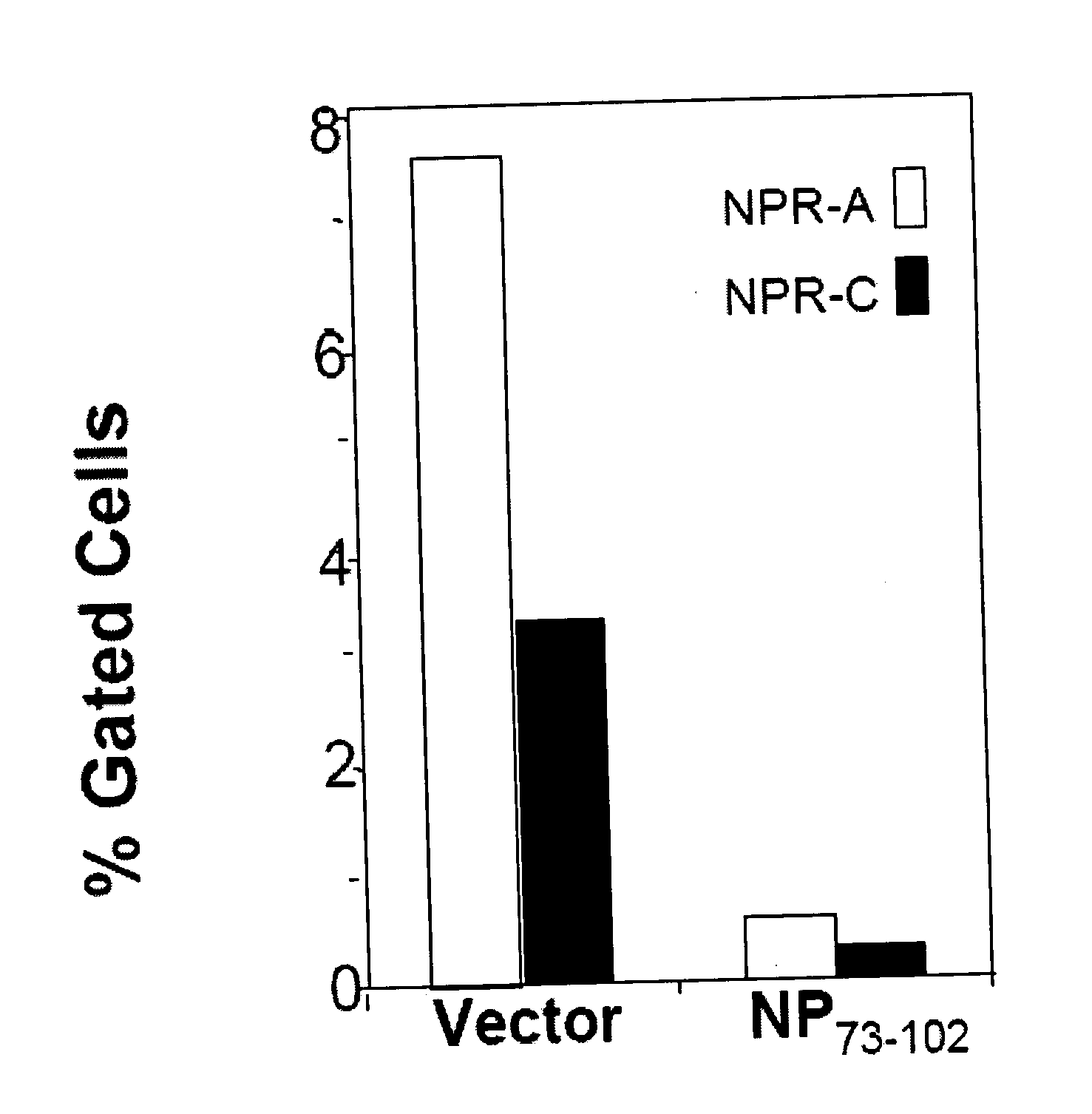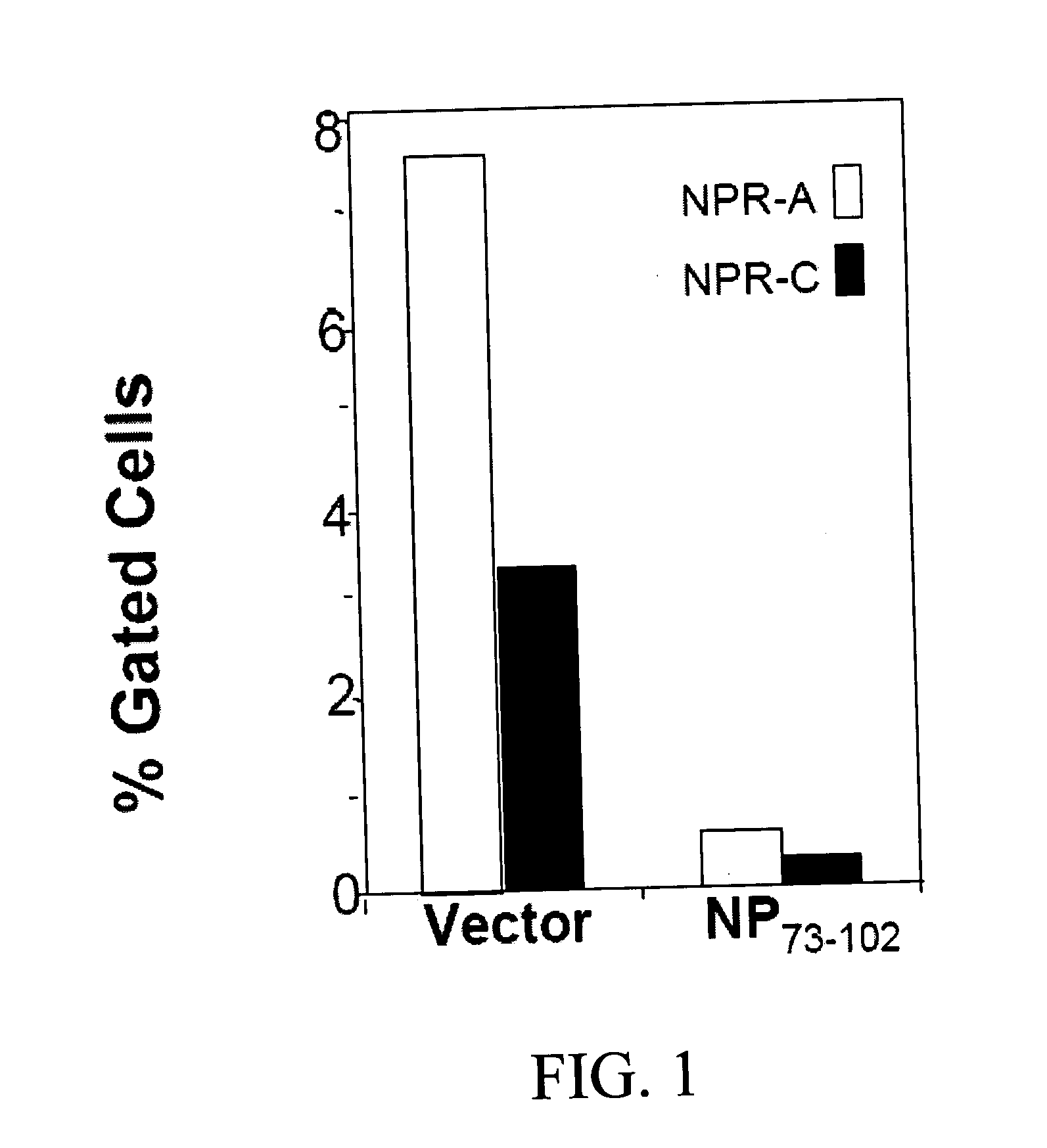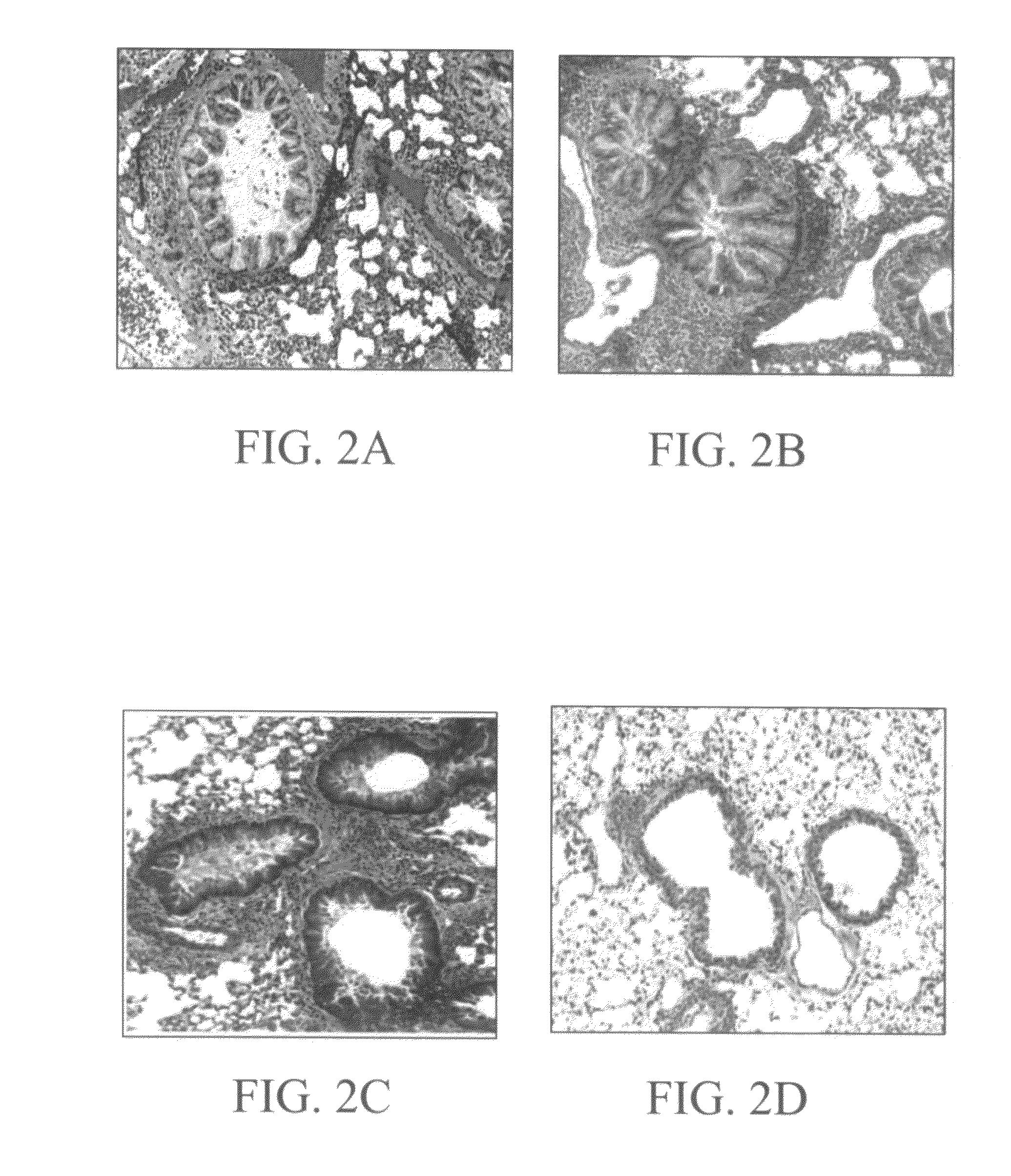Methods and compositions for reducing activity of the atrial natriuretic peptide receptor and for treatment of diseases
- Summary
- Abstract
- Description
- Claims
- Application Information
AI Technical Summary
Benefits of technology
Problems solved by technology
Method used
Image
Examples
example 1
PNP 73-102 Inhibits NPRA Expression
[0246]The structures of ANP and ANP like molecules with their ring-structure and receptors associated with it are well characterized. However, the N-terminal peptides do not have this structure. Neither KP nor NP73-102 was shown to bind ANP receptor NPRA (Mohapatra et al., J Allergy Clin Immunol, 2004, 114:520-526). The receptors for NP-73-102 are not known.
[0247]The highest expression of the ANP and ANP receptors is found in neonatal thymus. To test whether the peptide NP73-102 inhibits in vivo the ANP cascade, pregnant (12 days) mice were injected i.p. with pVAX (vector), or pNP73-102. After 1 day, mice were sacrificed and thymi removed from embryo, were homogenized. Cells were centrifuged and erythrocytes lysed by treating the suspension with ACK buffer. Cells were incubated with anti-NPRA or anti-NPRC antibodies for 1 hour, washed and incubated with PE-conjugated 20 Ab. Levels of NPR's were determined by flow cytometry. The results are shown in...
example 2
NPRA Deficiency Decreases Pulmonary Inflammation
[0248]Development and chronicity of cancers has been attributed to the chronic inflammation in the affected organs. ANP was reported to have anti-inflammatory activity, although signaling through NPRA is known to cause a number of different biological activity including cell proliferation, immune activation, inflammation and apoptosis. To determine the role of NPRA signaling in the lung inflammation, groups (n=3) of wild type DBA / 2 (wt) and NPR-C (ko) deficient mice and wild type C57 / BL6 (wt) and NPR-A (ko) were sensitized with ovalbumin (20 mg / mouse) and after 2 weeks challenged i.n. with ovalbumin (20 mg / mouse). One day later, mice were sacrificed and lung sections were stained with H & E to examine inflammation. As shown in FIGS. 2A-2D, there was no significant difference in pulmonary inflammation between the wild-type and NPRC deficient mice. In sharp contrast, a comparison between wild-type C57BL6 and NPRA deficient mice showed th...
example 3
A549 Cells Transfected with PNP73-102 Show a Significantly Higher Level of Apoptosis Compared Control and pANP or pVAX
[0249]To determine the effect of over expression of NP73-102 on proliferation of A549 lung epithelial cells, cells were transfected with either pNP73-102 or vector, pVAX. Cell cycle analysis was performed using propidium iodide (PI) staining and flow cytometry 48 h after transfection. No significant difference was observed between control and pNP73-102-transfected cells in S1, G0-G1 and G2-M stages of cell cycle (data not shown). However, an analysis of apoptosis using flow-cytometry with PI and annexin V, showed that cells transfected with pNP73-102 exhibited significantly higher apoptosis compared to cells transfected with either the control plasmid or a plasmid encoding ANP (FIGS. 3A-3C). This result was confirmed by (i) staining by TUNEL of A549 cells cultured in 8-chamber slide following a 48-hour transfection with either pANP or pNP73-102 (not shown), (ii) by a...
PUM
| Property | Measurement | Unit |
|---|---|---|
| Ratio | aaaaa | aaaaa |
| Weight | aaaaa | aaaaa |
Abstract
Description
Claims
Application Information
 Login to View More
Login to View More - R&D
- Intellectual Property
- Life Sciences
- Materials
- Tech Scout
- Unparalleled Data Quality
- Higher Quality Content
- 60% Fewer Hallucinations
Browse by: Latest US Patents, China's latest patents, Technical Efficacy Thesaurus, Application Domain, Technology Topic, Popular Technical Reports.
© 2025 PatSnap. All rights reserved.Legal|Privacy policy|Modern Slavery Act Transparency Statement|Sitemap|About US| Contact US: help@patsnap.com



